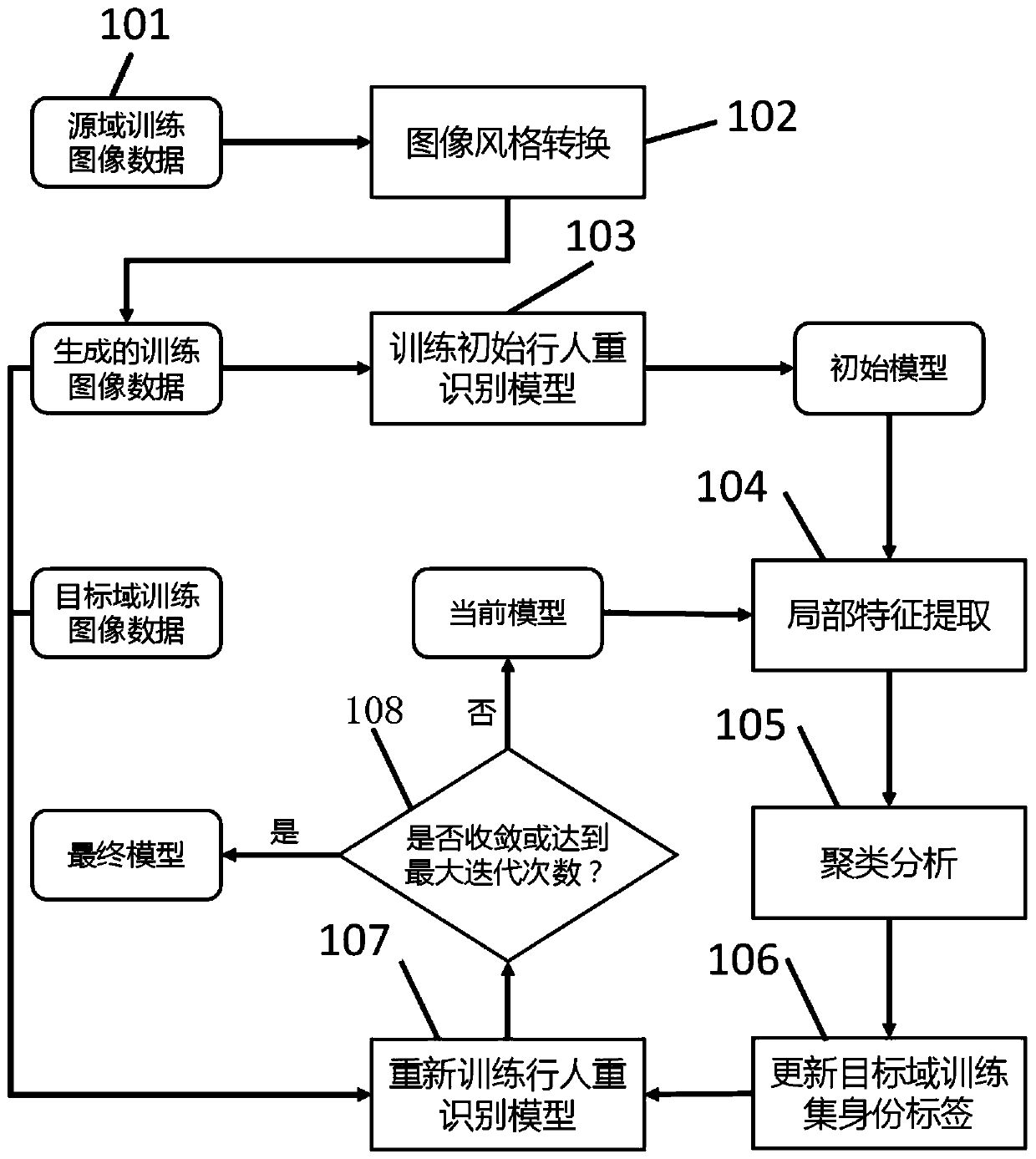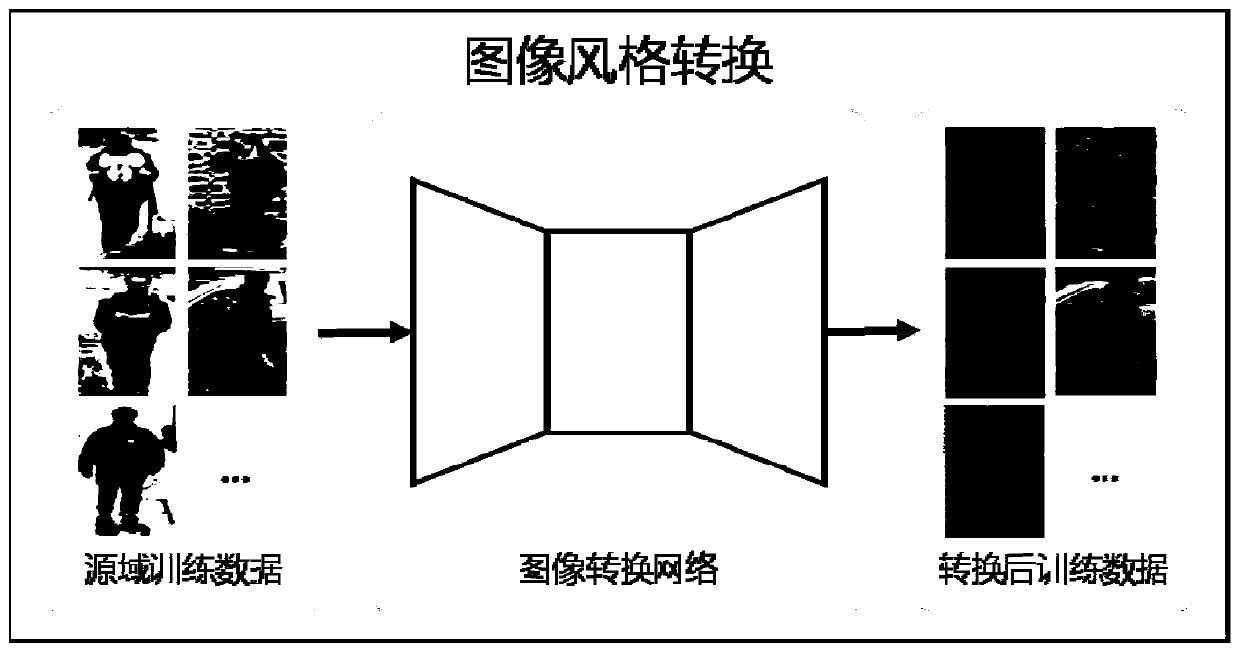Unsupervised cross-domain pedestrian re-identification method and system
A pedestrian re-identification, unsupervised technology, applied in the field of image recognition, can solve the problems of neglect and full utilization, and achieve the effect of improving the discrimination performance, alleviating the alignment problem and improving the accuracy.
- Summary
- Abstract
- Description
- Claims
- Application Information
AI Technical Summary
Problems solved by technology
Method used
Image
Examples
Embodiment 1
[0061] This embodiment provides an unsupervised cross-domain person re-identification method, please refer to the attached figure 1 , the specific implementation of the method includes the following steps:
[0062] S101. Obtain training image data with identity labels in the source domain and training image data without identity labels in the target domain, and construct a source domain training set with identity labels and a target domain training set without identity labels.
[0063] S102, converting the training image in the source domain to the target domain, and generating image data related to the target domain.
[0064] Specifically, using image conversion technology, the training image data in the source domain training set is converted to the target domain, while ensuring that the identity information of the image in the source domain remains unchanged, thereby generating an image that is similar in style to the image in the target domain and has an identity label in ...
Embodiment 2
[0104] This embodiment provides an unsupervised cross-domain person re-identification system, which includes:
[0105]The training set construction module is used to obtain training image data with identity labels in the source domain and training image data without identity labels in the target domain, and construct the source domain training set and the target domain training set;
[0106] The image conversion module is used to convert the training images in the source domain training set to the target domain to generate image data related to the target domain;
[0107] The initial model training module is used to train an initial pedestrian re-identification model using the generated image data;
[0108] The feature extraction module is used to extract the local features of each training image in the target domain training set based on the trained pedestrian re-identification model;
[0109] The cluster analysis module is used to perform cluster analysis on the training im...
Embodiment 3
[0114] This embodiment provides a computer-readable storage medium, on which a computer program is stored, and when the program is executed by a processor, the following steps are implemented:
[0115] Obtain training image data with identity labels in the source domain and training image data without identity labels in the target domain, and construct a source domain training set and a target domain training set;
[0116] Convert the training images in the source domain training set to the target domain to generate image data related to the target domain;
[0117] Use the generated image data to train the initial pedestrian re-identification model;
[0118] Based on the trained pedestrian re-identification model, extract the local features of each training image in the target domain training set;
[0119] Using the extracted local features, cluster analysis is performed on the training image data in the target domain training set;
[0120] Determine the optimal training sam...
PUM
 Login to View More
Login to View More Abstract
Description
Claims
Application Information
 Login to View More
Login to View More - R&D
- Intellectual Property
- Life Sciences
- Materials
- Tech Scout
- Unparalleled Data Quality
- Higher Quality Content
- 60% Fewer Hallucinations
Browse by: Latest US Patents, China's latest patents, Technical Efficacy Thesaurus, Application Domain, Technology Topic, Popular Technical Reports.
© 2025 PatSnap. All rights reserved.Legal|Privacy policy|Modern Slavery Act Transparency Statement|Sitemap|About US| Contact US: help@patsnap.com



